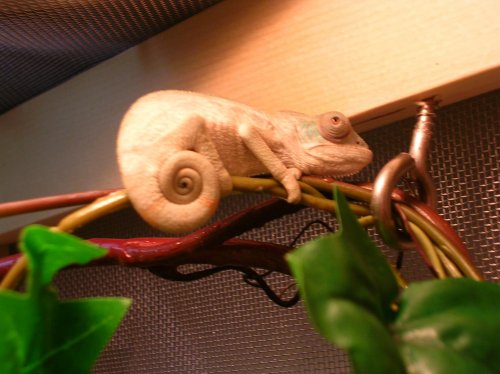So this past Sunday, I picked up a 3 month old male blue bar ambilobe baby from a woman on CraigsList. I got him home, and we have crickets small enough to feed him, but he doesn't seem to be interested in eating. He's in our living room, away from the other, bigger chams, and his cage is good sized, but not so big he's getting lost in it (my husband made a cage for him for when he gets bigger). I know he was eating crickets at his old home, so he's seen them and eaten them before. He gets misted twice a day.
We don't want to lose this little guy! Is it just the shock of moving? He was eating really well at his old home (his chubby tummy showed that), so I'm hoping he's just nervous about his new surroundings. Any input is welcome!
We don't want to lose this little guy! Is it just the shock of moving? He was eating really well at his old home (his chubby tummy showed that), so I'm hoping he's just nervous about his new surroundings. Any input is welcome!






